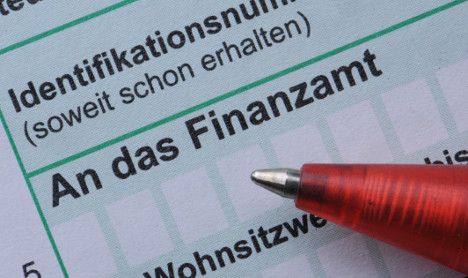Carsten Kühl, Social Democrat (SPD) finance minister in Rhineland-Palatinate, told the Berliner Zeitung on Thursday that banking secrecy needed to be lifted and interests and dividends needed to be taxed at a significantly higher rate.
At the moment all investment income is taxed anonymously at a blanket rate of 25 percent, well below the top rate of income tax which is 45 percent.
Kühl wants investment tax to match that, as it did before 2009, the last time that the SPD and the CDU shared a government. But banking secrecy remains the key impediment.
"We can't demand from other states that they name tax refugees to our authorities, when we aren't doing anything like that in our country," he said.
It was SPD Finance Minister Peer Steinbrück who introduced the anonymous blanket tax in 2009 to fight the loss of revenue abroad, under the slogan "Better 25 on x, than 42 on nothing."
But Kühl argues that circumstances have changed now, because more and more foreign banks are declaring their customers' interest revenues in their home countries.
"That means that there is less and less justification for privileging investment income," said Kühl.
The increased revenue should be used to counteract so-called "bracket creep" – the name given to the effect when wages only increase with inflation.
In real terms, this means that taxpayers' incomes are squeezed in real terms because increased wages mean they gradually fall into higher tax brackets.
In response to a Green Party information request in parliament, the German government admitted that cold progression means that taxpayers will pay €800 million extra in 2014, rising to €3.1 billion in 2015, €5.6 billion in 2016, and as much as €8.1 billion in 2017.
Mid-range incomes will be hit the most by the effect.
Kühl said that tax brackets needed to be altered soon to reduce the effect – not least to counter the argument of populists who want a flat rate on all tax. The government is legally obliged to produce a report on “bracket creep” by the end of this year.



 Please whitelist us to continue reading.
Please whitelist us to continue reading.
Member comments